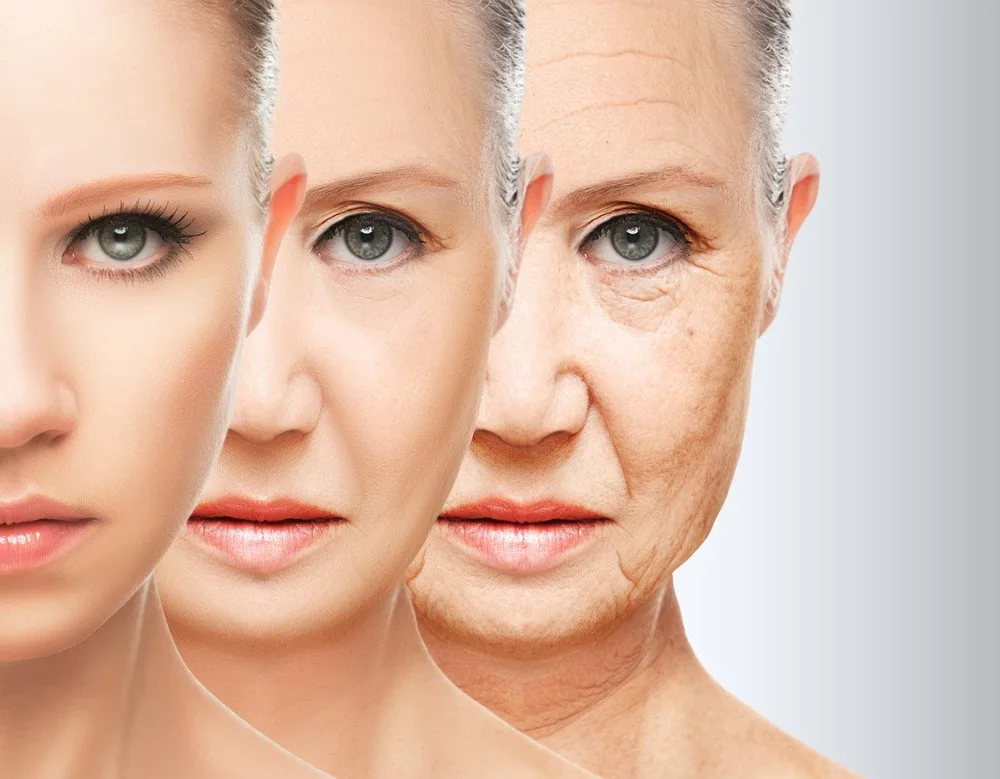Aging skin is a major concern for menopausal women – who experience hormone changes – as it affects self-confidence, psychological wellbeing, intimate relationships, and is the one life challenge where women don’t budget. The anti-aging industry, which is worth $50 billion a year, knows this very well!
When women notice more wrinkles, increased sagging, dullness, dryness and feeling less attractive, they usually opt for fillers, Botox, threads, chemical peels, etc. However, the question remains: how long will all of these sustain rapidly aging skin? Scientific evidence suggests that women lose 30% of their collagen content in the first five menopausal years. Recently, it has been proposed that using bioidentical HRT during this critical time of rapid skin aging can hugely prevent menopausal skin aging.
Furthermore, in the European anti-aging market, “skin HRT” is already being used to prevent rapid changes in menopausal skin by targeting oestrogen receptors. “Skin HRT” is used as an anti-aging cosmeceutical, not just to prevent rapid skin aging, but it can be safely used in women where HRT is contraindicated, as it does not absorb systemically.
What is the medical rationale for combining aesthetic procedures with hormonal treatment in menopausal skin?
Skin cells contain estrogen and estrogen- related receptors, which are affected during menopause by diminished estrogen levels. These receptors are found in keratinocytes, sweat glands, fibroblasts, hair follicles and blood vessels which reside in the skin. You can imagine that once there is no binding to these receptors, all of the functions of the structures are disturbed.
Beta receptors are predominantly involved in maintaining the antioxidative capacity of the skin, which is important for combating continuous photo-aging and maintenance of intact collagen. When estrogen is low, skin is more prone to photo-aging, loss of elasticity and firmness, and it appears sagged, thinner and wrinkled. In addition, estrogen is important for the production of glycosaminoglycans, which are directly involved in maintaining the water content of the skin. During menopause, concentration of the blood vessels in the skin declines; this leaves the skin less oxygenated, with slower cell turnover. All of this contributes to thinning of the dermis and transepidermal water loss, leaving the skin looking more pale and dehydrated. This dehydrated skin appears to be more prone to flaking, which weakens the capacity of the dermal area to act as a barrier to bacteria.
During menopause, there is a change in the estrogen-testosterone ratio, towards relatively higher testosterone levels, leading to production of thicker sebum by sebaceous glands, thus making some women more prone to adult acne. In other words, the anti-acne effect of estrogen during reproductive years is lost in menopause. A similar outcome can be seen by the unwanted growth of facial hair due to relatively higher testosterone. Estrogen is a well-known melanin production-enhancer, regulating it and keeping the melanin under control. Exposure to UV radiation and less estrogen control during menopausal years increase melanin synthesis and lead to the appearance of brown “age spots”.
Women usually notice sagging and wrinkled skin of the face and neck, sagging arms and inner thighs, and deterioration of the cellulite. Some will also notice redistribution of fat tissue, which is more concentrated in the abdominal area, or loss in certain areas, such as breast tissue.
Looking for a change in your skin care routine?
Change in other hormones, such as growth hormone, DHEA, etc, further complicates the deterioration of supportive structures under the skin.
Understanding these inevitable changes during menopause, you can presume that for the long-lasting results of all aesthetic face and body procedures, supplementation with adequate hormone replacement therapy (we recommend bioidentical) is a necessity. Moreover, the only way to taper such rapid skin-aging in the first years of menopause is to apply comprehensive integrative anti-aging supplementing with what the aging body has lost – mainly hormones. Click here to find out more about hormone replacement therapy and what it is used for.





![women [longevity live]](https://longevitylive.com/wp-content/uploads/2020/01/photo-of-women-walking-down-the-street-1116984-100x100.jpg)









